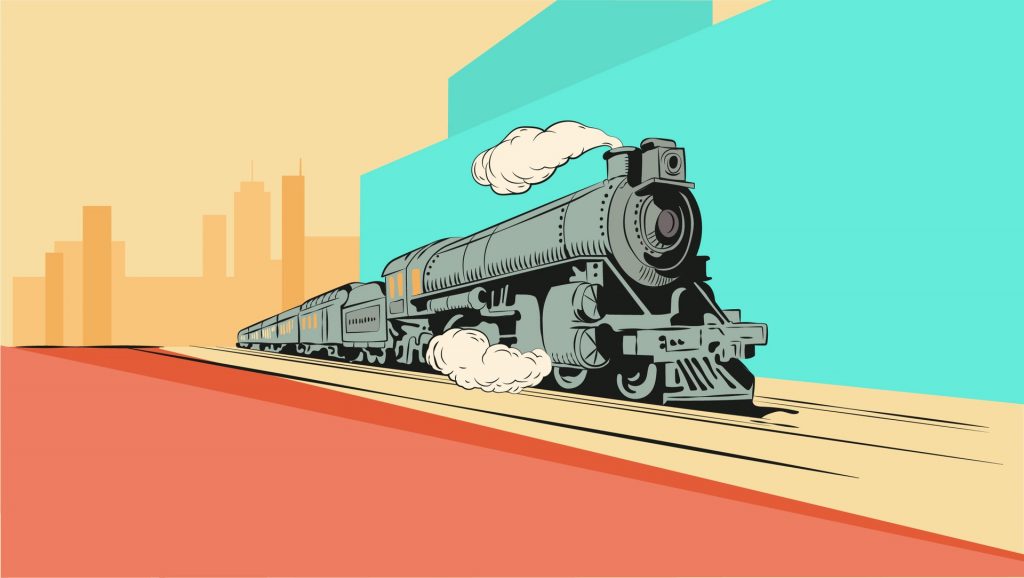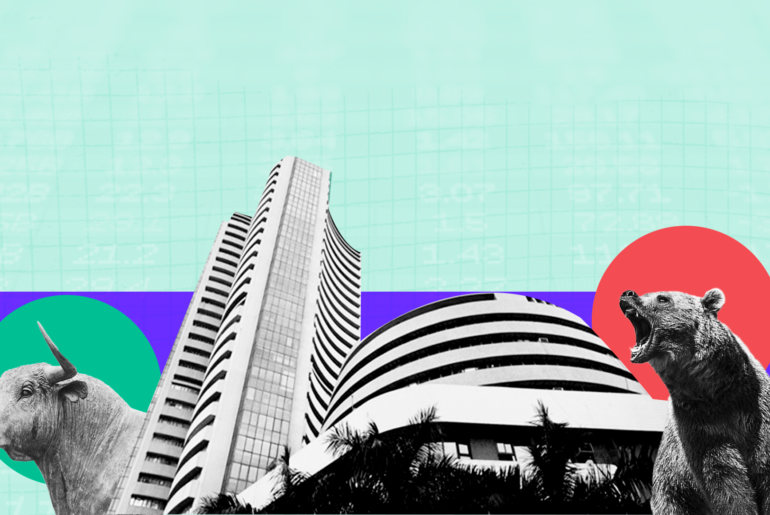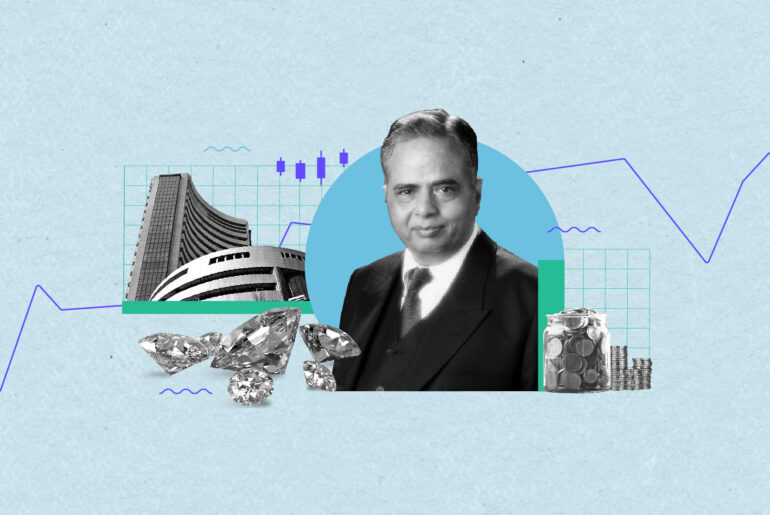Last Updated on Mar 24, 2021 by Manonmayi
The mere announcement of the IRCTC IPO had built a hype among investors. Further, its glorious performance on getting listed kept the investors’ sentiment high. But experts opine that this ride might get slower over time.
In this article, we look at reasons for IRCTC’s stellar performance and why experts expect it to slow down in the near future. But before that, let’s discuss the history of IRCTC’s parent company, the Indian Railways.
History of Indian Railways
With a track length of 67,368 km, Indian Railways is the world’s 4th largest and Asia’s biggest network. It is 166 years old and its history goes back to the time when India was under British rule. So, here goes.
The idea of introducing a railway system in India was first conceived by Lord Hardinge, the former Governor General of India, in 1843. He wrote a memo: “Railways would be beneficial for the commerce, government, and military control of the country.” This and a dialogue by his successor Lord Dalhousie show that railways were mainly built for the benefit of the British East India Company. Whatsoever, today, Indian Railways is considered to be one of the finest in the world due to its track length, efficiency, and punctuality.
At the nascent stage, railways in India were built by private players. In a bid to lure private entrepreneurs to invest in railways, the British government launched a scheme that promised a guaranteed return of 5% to investors from London. The agreement was that a private player would start a railway company and once it was established, would transfer the company to the government and only retain its operational control. Being the only attractive investment on the London Stock Exchange at the time, the guaranteed-return scheme attracted many railway companies, which led to the rapid growth of the rail system in the country. This is just how Indian railways started. Read the timeline to see how it evolved to be what it is now.
1851 to 1869: the nascent phase
The first train in India, which was built to transport construction material from Roorkee, ran in the year 1853. The first passenger railway, on the other hand, ran in 1853 between BoriBunder station and Thane. Also, 8 railway companies were started under the guarantee-return system during this period:
- Eastern India Railway
- Great India Peninsula Company
- Madras Railway
- Bombay Baroda and Central India Railway
- Scindia Railway
- Eastern Bengal Eastern Railway
- Calcutta and South Railway Company
1869 to 1900: expansion and additions
Between 1869 and 1881, the British government took over the responsibility of laying railway lines from the East India Company and fuelled the expansion. By 1880, the railway network had expanded to 9,000 miles. In 1890, new passenger amenities such as toilets, electric lighting, and gas lamps were added to the railways. A 4th class was also created to accommodate the growing number of train passengers, and by 1895, India started building its own locomotives. In the year 1901, railways started making profits and the Railway Board was established.
1901 to 1925: centralisation and hard times
The idea of electrifying the rail network in India was first conceived in 1904 by W.H White. During these years, the government acquired all major rail lines by 1907 and began leasing them to private operators. Meanwhile, during World War I, the railways’ development suffered as production was directed to meet British requirements. In 1924, railway finances were separated from the general budget and the railways received its first budget in 1925.
1925 to 1946: electrification and harder times
The first electric railway ran between Bombay and Kurla in 1925. Between 1925 and 1930, several sections on the railway network were electrified. By 1929, the railway network spread over a length of 66,000km and carried ~90 million goods and 620 million passengers annually. However, things took a turn for worse during the economic depression when Rs 11mn was withdrawn from the railway reserve fund. World War II was also not a great time for the railways, as the Britishers used the wagons for military purposes. By 1944, all railway companies were nationalised.
1947 and 1980: creation of zones
During partition, most of the railways network was damaged, and it took two years to bring the network on track. Thereafter, in 1950, the Railway Board proposed to organise railways network by dividing it into 6 zones. However, it was only implemented in 1951. Over the years, 3 more zones were added to the existing ones and by 1966, Indian Railways had 9 zones as follows:
- The Northern zone
- The North Eastern zone
- The North East Frontier
- The Eastern zone
- The South Eastern zone
- The South Central zone
- The Southern zone
- The Central zone
- The Western Railways
1980 to 2000: technological advancements
Between 1980 and 1990, ~4,500 km of railway track was electrified. In 1995 CONCERT (country-wide network of computerised enhanced reservation and ticketing was introduced), which allowed passengers to book and cancel tickets of any railway from any terminal was established.
2000 onwards
In 2002, a subsidiary of Indian Railways—IRCTC—was launched to facilitate online train reservations and ticketing. In 2016, India’s fastest train, the Gatimaan Express, ran from Delhi to Agra. Indian Railways aims to electrify the entire rail network by 2022. The government plans to offer free WiFi services at ~7,000 stations by 2019, and by 2025 it plans to meet 25% of railways’ power requirement using renewables, primarily solar energy. Today, Indian Railways has 16 zones as follows:
- Central Railway
- Eastern Railway
- East Central Railway
- East Coast Railway
- Northern Railway
- North Central Railway
- North Eastern Railway
- North Frontier Railway
- North Western Railway
- Southern Railway
- South Central Railway
- South Eastern Railway
- South East Central Railway
- South Western Railway
- Western Railway
- West Central Railway
Indian Railway Catering and Tourism Corporation Ltd (IRCTC)
Incorporated as a public entity on 27th Sep 1999, Indian Railway Catering and Tourism Corporation Ltd. (IRCTC) is a subsidiary of Indian Railways whose administrative control lies with the Ministry of Railways. It was established to promote domestic and international tourism and to manage catering and hospitality services at railway stations and other locations.
IRCTC is recognised as a ‘Mini-ratna’ company and is the only authorised entity to offer online railway tickets, catering services, and packaged drinking water at railways and stations across the country. IRCTC offers online railway tickets through:
- IRCTC website-irctc.co.in
- IRCTC mobile app ‘Rail Connect’
IRCTC has four lines of business as follows:
- Catering and hospitality
- Internet ticketing
- Travel and tourism
- Packaged drinking water (Rail Neer)
Besides, it has diversified its other business segments such as:
- IRCTC non-railway catering
- IRCTC e-catering
- IRCTC budget hotels and executive lounge
IRCTC IPO
IRCTC was a public company whose shares were held by the President of India. Last year, it offered IPO as part of the government’s divestment plan, post which, the President’s stake reduced to 87.40% of the paid-up equity capital. So far, the IPO has been on a roll. Let us speak about the IPO performance until now.
The stellar performance of IRCTC IPO
On 14th Oct 2019, the stock was listed on NSE at Rs 626, while the IRCTC issue price was Rs 320. Ever since the stock has shown stellar performance, and these have been the monthly high points:
- Rs 906.25 on 27th Oct 2019
- Rs 932.90 on 11th Nov 2019
- Rs 933.45 on 31st Dec 2019
- Rs 1,210.30 on 31st Jan 2020
- Rs 1,951.95 on 25th Feb 2020
The stock has moved close to Rs 2,000 at the time when the broader market is mute. Till date, the stock has zoomed 522% of the issue price and the reasons can be:
Monopoly and high revenue
IRCTC is a monopoliser of offering online train ticket booking and catering services to railway passengers. Plus, it is the only entity authorised to offer packaged drinking water at railway stations. These factors give IRCTC the privilege of earning high revenue, which highlights its financials.
Business growth
During her Budget 2020 announcement, Finance Minister Nirmala Sitharaman proposed to bring in more trains similar to Tejas, which may have boosted investor sentiment. Tejas Express runs on two routes: Lucknow-Delhi and Mumbai-Ahmedabad. Recently, IRCTC also started the Kashi-Mahakal Express that runs between Indore and Varanasi, which may have spurred the stock price.
Strong financials
IRCTC financials are strong. The company declared a net profit of Rs 205.80 cr for Q3, which is a 179.62% rise y-o-y from Rs 73.60 cr. This spurt in net profit is accredited to the reintroduction of service charge from 1st Sep 2019. Now travellers in non-AC and AC have to pay a service charge of Rs 15 and Rs 30 per ticket, respectively. This has significantly added to the net profit for FY19 Q3.
Here’s a chart depicting the rise in net profit:
Further, IRCTC’s net sales also increased by 64.6% to Rs 715.98 cr in Q3.
Speaking of total revenue from its 4 business segments, it grew by 25% in FY19 compared to FY18, and stood at Rs 1,899.40 cr. Of this, the contribution of internet ticketing segment was 12.35%, catering business was 55%, packaged drinking water was 9.28%, and travel and tourism was 23.38%.
Besides, IRCTC has strong cash in books that stood at Rs 1,140 cr for the FY19-end, up from Rs 834 cr in the last year.
What does the future for IRCTC stock look like?
Experts believe that IRCTC stock’s sprint may not last and here’s why.
IRCTC has an unusually high PE ratio
IRCTC P/E ratio is 31 times, which is far more than the standard for a public sector unit stock. This is also in contrast to the PSU sector in general, where investors’ sentiment is low. Besides, PSU stocks such as ONGC and NTPC are trading near their decadal lows.
IRCTC is susceptible to the government’s policy changes
PSU stocks react almost immediately to policy changes. That is why, in general, their valuations are not very high. The same goes for the IRCTC share. Though the stock is trading at higher levels in just a few months of being listed, it is important to bear in mind that IRCTC is at the risk of policy changes. The fact that IRCTC’s net profit for FY19 Q3 is ~170% higher compared to the same period last year justifies the risk.
To elaborate, post demonetisation, the government had directed IRCTC to not levy convenience fees charges to passengers. This was to encourage digital transactions. However, the government has made a policy change and reintroduced the fee, which is why the revenue from internet ticketing has increased and pushed the overall figure remarkably. This also signifies that a negative policy change can decrease the net profit.
A very relatable example of this phenomenon is how Coal India plummeted after the government announced various policy changes relating to the coal mining sector. Like IRCTC, Coal India is a monopoliser in its segment, but is clearly susceptible to government policy changes. Naturally, the increase in IRCTC’s revenue may not be as high in FY20 compared to FY19, unless the government announces a positive policy change.
Let’s wait it out and see if IRCTC stock continues its sprint in the future too.
- How To Analyse Stocks: Identifying Fundamentally Strong Companies - Nov 20, 2024
- Best ETFs in India: NSE ETF Lists of Gold, Debt & Equity ETFs (2024) - Nov 7, 2024
- Best Gold ETFs in India With Expense Ratio - Oct 29, 2024




